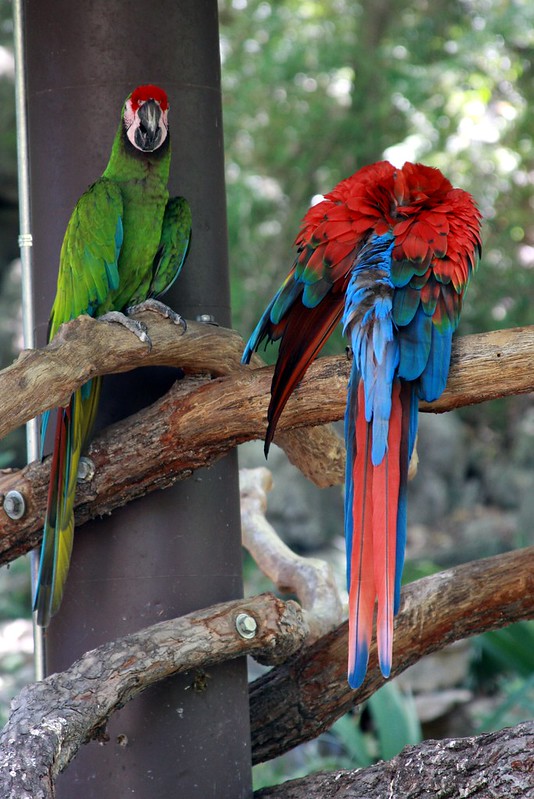Blood can be well, disgusting to deal with. Nothing is more heart-wrenching or perhaps nerve-wracking to find your bird suddenly has an injury that is bleeding and needs to be dealt with immediately. If your bird started bleeding right now, would you know what to do? Because birds are small, a seemingly low amount of blood loss to us can mean a major loss to them.
 |
Photo by DearPioneer  |
When handling a bird to control bleeding, a good restraint technique is important to ensure that the bird is being immobilized, while not getting overheated. Holding the bird in a towel or small blanket will help immobilize and calm the bird.
Bleeding from broken blood feathers:
Breaking a blood feather is not uncommon, especially in the species that tend to be rough, like caiques. Feathers are delicate when growing in, and because a new feather does have a blood supply, can bleed quite badly. When trying to stop bleeding on a blood feather, do not apply silver nitrate or commercial aids like kwik stop, as these products can actually damage the feather follicle. Apply pressure to the area and wait. If the bleeding stops, observe the bird carefully. Depending on the location of the feather, you may want to pull the feather to prevent future issues. If you are not comfortable with pulling the feather yourself, take the bird to your local avian vet so they can show you the proper procedure.
Bleeding from nails:
You can apply a commercial aid such as silver nitrate stick, or kwik stop to the area with pressure until bleeding has subsided. Silver nitrate and kwik stop are clotting agents that will help slow the blood flow. If you don't have these products on hand, you can also apply cornstarch or flour to the area, as these home remedies also will help clot.
Bleeding from beak
It does happen. On more than one occasion my clumsy caique has bonked his beak on something, cracked the very tip, and caused some blood flow. In this case, you want to apply pressure, corn starch, or flour. Avoid agents like kwik stop, as they will cause a burning sensation, and a bird's beak is very sensitive. Once the bleeding has stopped, apply something like Nu Skin, or another form of liquid bandage over the area to help protect and seal the wound.
Once the bleeding has stopped and the bird is stable, the bird should be assessed by your avian vet to see if other precautionary measures need to be taken. Beak injuries are painful, so offer your bird a soft diet alternative until the injury has healed and the bird is able to resume a normal diet.
Bleeding from the vent:
In the situation that your bird is bleeding from the vent, rush to your local vent immediately. Bleeding from the vent can stem from a number of causes including egg binding, polyp, and ulcer. Keep your bird warm and quiet until you can see your local veterinarian.

No comments:
Post a Comment